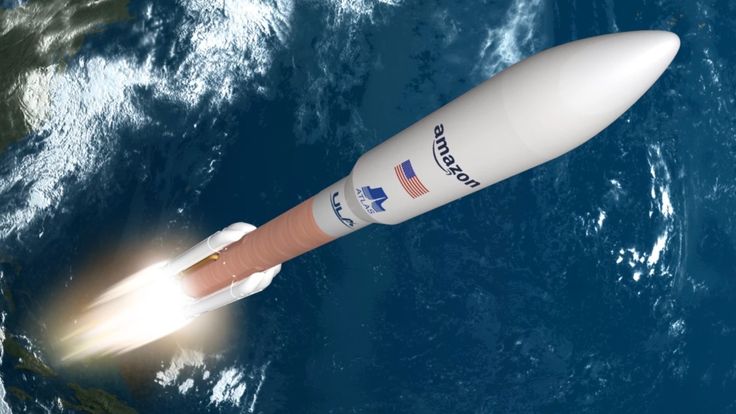Amazon Marketplace: Amazon and Vrio Challenge Starlink with New South American Satellite Internet Service
Key Takeaway
Amazon and Vrio are set to launch a satellite internet service in seven South American countries, aiming to provide better internet access and directly competing with Elon Musk‘s Starlink. This collaboration leverages Amazon’s Project Kuiper to deploy 3,236 satellites, targeting areas with poor connectivity. The service is expected to begin in mid-2025, starting with Argentina.
Summary
- Amazon and Vrio are launching a satellite internet service in seven South American countries.
- The service aims to provide better internet access and compete with Starlink.
- Vrio manages the Latin American branch of DirecTV and Sky Brasil.
- Target countries include Argentina, Brazil, Chile, Uruguay, Peru, Ecuador, and Colombia.
- Project Kuiper will deploy 3,236 satellites for this initiative.
- The service is expected to start in mid-2025, beginning with Argentina.
- Amazon announced a $10 billion investment in Project Kuiper in 2019.
- The goal is to offer the same broadband access in urban, suburban, and rural areas.

Amazon and Vrio’s Strategic Move into South America
Amazon, in collaboration with telecommunications firm Vrio, is poised to launch a satellite internet service across seven South American countries. This move places them in direct competition with Elon Musk’s Starlink, a leading satellite internet provider. The partnership aims to bridge the digital divide in regions where internet access is limited or non-existent.
The Players: Amazon and Vrio
Amazon, a global e-commerce and technology giant, brings its technological expertise through Project Kuiper. Vrio, a U.S. firm that manages DirecTV Latin America and Sky Brasil, will offer the service across its extensive network. This partnership combines Amazon’s satellite technology with Vrio’s established customer base in the region.
Target Regions and Connectivity Challenges
The service will cover Argentina, Brazil, Chile, Uruguay, Peru, Ecuador, and Colombia. According to Lucas Werthein, vice president of Vrio, around 200 million people in these countries suffer from inadequate internet access. The geographical terrain and financial challenges of large infrastructure investments exacerbate this issue.
Project Kuiper’s Technological Backbone
Project Kuiper, initiated by a former Starlink employee, plans to deploy 3,236 satellites in low Earth orbit. This network aims to provide consistent and reliable internet access regardless of the user’s location. The launch plan indicates that the service will be available starting in mid-2025, with Argentina being the first to benefit.
Investment and Future Plans
Amazon’s commitment to Project Kuiper is substantial, with a $10 billion investment announced in 2019. This investment underscores Amazon’s dedication to enhancing global connectivity and expanding its reach in the telecommunications sector.
Market Competition with Starlink
Elon Musk’s Starlink has been a pioneer in satellite internet, already offering services globally. Amazon and Vrio’s entry into this market introduces a significant competitor. Both companies aim to provide affordable and high-speed internet, but their strategies and technological approaches may differ.
Impact on South America
The introduction of satellite internet by Amazon and Vrio could revolutionize connectivity in South America. Improved internet access can drive economic growth, enhance education, and provide better access to information and services. This initiative could significantly reduce the digital divide in rural and underserved areas.
Tables for a Closer Look
Table 1: Target Countries and Population Affected
| Country | Population (Millions) | Internet Access Challenges |
|---|---|---|
| Argentina | 45 | Poor connectivity in rural areas |
| Brazil | 212 | Large underserved regions |
| Chile | 19 | Geographical barriers |
| Uruguay | 3.5 | Limited rural access |
| Peru | 32 | Challenging terrain |
| Ecuador | 17 | Infrastructure investment challenges |
| Colombia | 50 | Connectivity gaps in remote regions |
Table 2: Project Kuiper vs. Starlink
| Feature | Project Kuiper | Starlink |
|---|---|---|
| Satellite Count | 3,236 | Approximately 12,000 planned |
| Investment | $10 billion | Over $10 billion |
| Service Launch | Mid-2025 | Available in many regions |
| Key Markets | South America | Global |
| Partner | Vrio (DirecTV Latin America, Sky Brasil) | None |
Future Prospects and Challenges
The collaboration between Amazon and Vrio is a significant step towards improving internet connectivity in South America. However, the project will face challenges such as regulatory approvals, technological hurdles, and competition from established players like Starlink. Ensuring affordability and reliability will be crucial for gaining consumer trust and market share.
Conclusion
Amazon and Vrio’s initiative to launch satellite internet in South America represents a bold move towards enhancing digital connectivity in the region. With significant investments and strategic planning, this project has the potential to transform internet access for millions. The competition with Starlink will drive innovation and improvements, ultimately benefiting the end-users.



